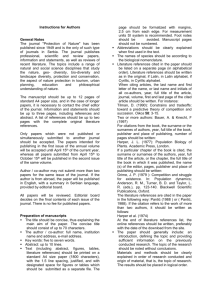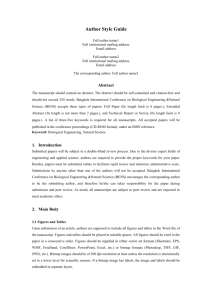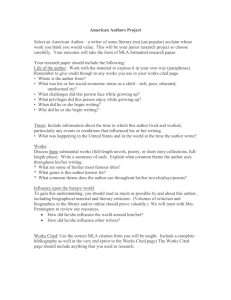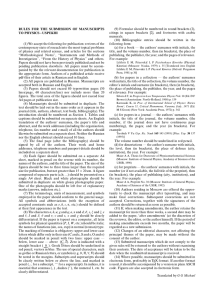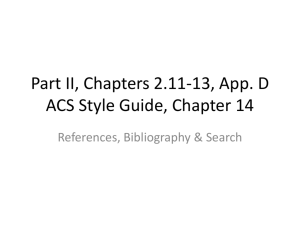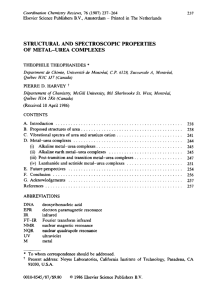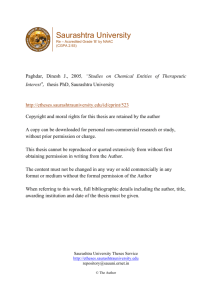Papers
advertisement
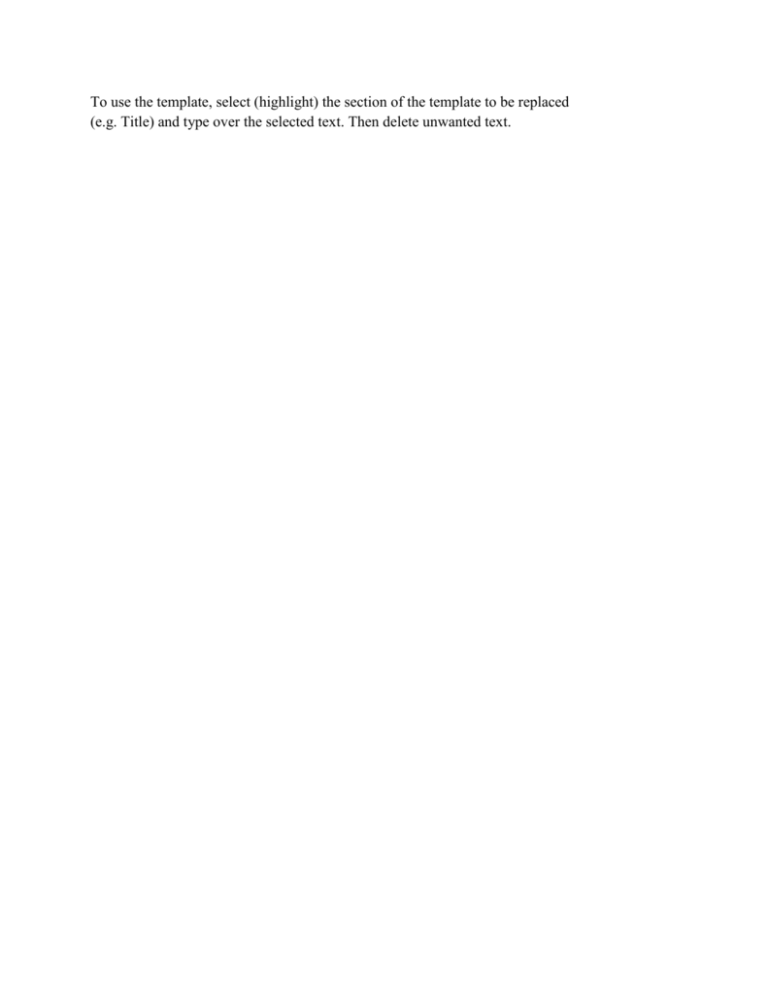
To use the template, select (highlight) the section of the template to be replaced (e.g. Title) and type over the selected text. Then delete unwanted text. Title. The title should clearly and concisely describe the purpose of the paper and should not include abbreviations. Only the first letter and proper names (e.g. Lewis acid) should be capitalized Author Names. The following should be provided for each author: first name, middle initial and surname (e.g. Alfred N. Other). Initials alone with surnames (e.g. A. N. Other) should not be used. Do not include profession titles or academic degrees. The name of the corresponding author should be marked with an asterisk (*). If authors are from different institutions their surnames should be labeled with a lower case superscript letter referring to the respective addresses Authors’ addresses. The mailing address(es) of author(s) should include the institutional affiliation , street or PO box number, city, postal code and country. Do not include phone or fax number E-mail: The address line should be followed by the e-mail address of the corresponding author The dedication for a commemorative issue should appear on the line below the e-mail address Abstract All manuscripts must be accompanied by a written abstract which should briefly state the purpose of the research , the principal results and the major conclusions. Numbers (arabic) identifying structural formulae or labels may be used in the abstract. A typical abstract should contain 50-100 words. Keywords: The abstract should be followed by 4-6 keywords Introduction An introductory statement should be given placing the work in the appropriate context and stating the purpose and objectives of the research. Type or cut/paste. Results and Discussion All significant results should be discussed in this section. For the correct formatting of tables, figures, schemes or equations please refer to the detailed “Instructions to Authors”. Tables, Figures and Graphics (Schemes, Equations and Structure blocks) should be inserted as close to the relevant text as possible. Important: do not use the “float over text” option. Conclusions Optional Experimental Section Please see detailed “Instructions to Authors” under General Procedures, Evidence of Identity and Evidence of purity. Acknowledgements Acknowledgements optional. References The format required for references and footnotes is given below. Unnecessarily long reference lists should be avoided by selecting references carefully and citing reviews whenever possible. All references must be cited in the text by the reference number using superscripts. Notes may be used to cite manuscripts in preparation, unpublished observations and personal communications. References cited should follow the style below: PAPERS 1. Bakke, J. M.; Gautun, H. S. H.; Sletvold, I. Arkivoc 2001, (x), 26. 2. Wanner, M. J.; Koomen, G.-J. J. Chem. Soc., Perkin Trans. 1 2001, 1908. BOOKS 1. Henderson, B.; McIndoe, J. S. in Comprehensive Coordination Chemistry; McCleverty, J. A.; Meyer, T. J. Eds.; Elsevier: Oxford, 2003; Vol. 1, p 387. 2. Reichardt, C. Solvents and Solvent Effects in Organic Chemistry; VCH: Weinheim, 1990; Vol. 4, pp 298–311. 3. Furniss B. S.; Hannaford A. J.; Smith P. W. G.; Tatchell, A. R. Vogel’s Textbook of Practical Organic Chemistry, 5th Edn.; Wiley: New York, 1989; pp 64–67. DISSERTATIONS 1. Lund, K. P. Ph.D. Thesis, UCSD, 1992. PATENTS 1. Wright, J. B. U.S. Patent 3 115 496, 1963. 2. Baylis, A. B.; Hillman, M. E. D. Ger. Offen. 2 155 113, 1972; Chem. Abstr. 1972, 77, 34174. 3. Buntain, I. G.; Hatton, L. R. Eur. Pat. Appl. 295 117 1988. 4. Alia, J. M.; Backendorf, C. M. P. PCT Int. Appl. 075903, 2003; Chem. Abstr. 2003, 139, 240348. CONFERENCE PROCEEDINGS 1. Scott, L. T.; Cheng, P.-C.; Bratcher, M. S. Eighth International Symposium on Novel Aromatic Compounds, Victoria, British Columbia, Canada, July 19–24, 1992: Abstract No. 64. Note: The Chem. Abstr. reference should be quoted for less accessible literature (e.g., patents). Authors are responsible for obtaining written approval for all personal communications and sending a copy of the manuscript to those cited as authors of personal communications.
